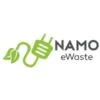Recently, it has been revealed that Haryana is doing well in terms of e-waste management than most other states in India. It is placed at the fourth position regarding the installed capacity of recycling plants. Its recycling capacity is 1.24 lakh tonnes annually. Uttar Pradesh leads the lot with an annual installed capacity of 4.94 lakh tonne. Uttarakhand is also ahead of Haryana with a 1.47 lakh tonne capacity. Tamil Nadu has a 1.32 lakh tonne capacity.
The country has 468 authorised recyclers as well as dismantlers in 22 states with a total annual e-waste processing capacity of 13.86 lakh MT. The information was shared in the Lok Sabha by Ashwini Kumar Choubey, the Minister of State for Environment, Forests, and Climate Change.
As per the information shared by the minister, India produced a 10,14,961.2 tonnes of electronic-waste in 2021. It is a tremendous 31.6% up from the last year. It is noteworthy that out of this, only 22% of e-waste got recycled in the country. In 2017–18, India recorded 7,08,445 tonnes of e-waste generation and 7,71,215 tonnes of e-waste production in 2018–19 , which is up by 8.86%. The e-waste management guidelines and rules were formed in 2016 that are amended frequently with time. The Environment Ministry has categorized 21 types of EEE (electrical and electronic equipment) as e-waste.
Extended producer responsibility (EPR) was made part of the 2016 e-waste management guidelines. According to which the electronics devices manufacturers and bulk consumers were made liable for collecting and channelling e-waste from individual consumers to authorised recyclers, plants, or re-processing units.
The guidelines provide the authority for dismantling as well as recycling e-waste to authorised recyclers who have the facility for erasing data from the device. There are many e-waste management companies having plants in India that are busy cleaning the nation’s e-waste and Namo E-Waste is at the forefront of the same. India is the third biggest contributor of e-waste in the world mainly due to more number of smart device users and other factors. The latest recorded data says that India generates about 32 lakh tonnes of e-waste yearly. It is placed below China and the US in the list.
With each passing year, the volume of e-waste generated is skyrocketing. Advancements in high technology have produced enormous amounts of e-waste which lie accumulated without being processed. The advent of advanced technology and efficient electronic devices is compelling people to discard the older ones within a short period. With each electronic device going to waste, the mission of making the country e-waste free is getting tougher. The solution in sight to reduce the pollution due to toxic e-waste is to use technology and implement stricter laws and regulations.
E-waste Management capacity in North India
0


